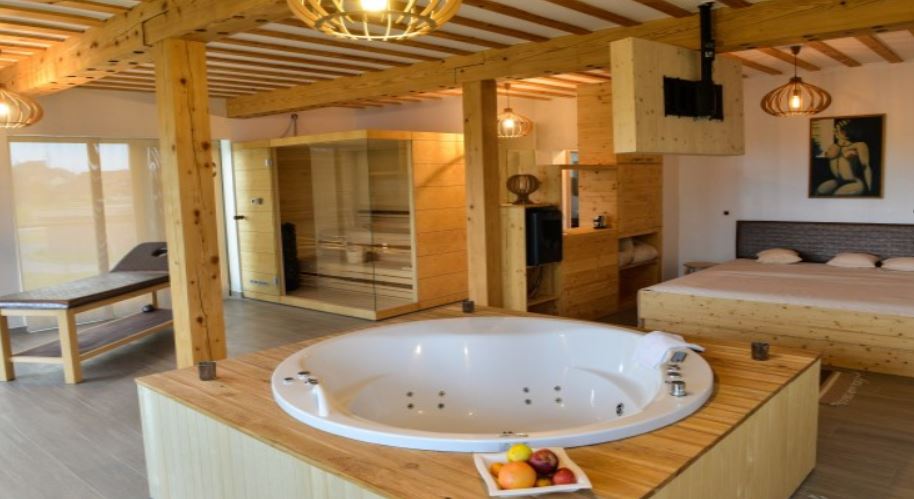Could Croatian Garden Camping Take Off? Popular New Trend Sparks Idea
April the 26th, 2023 - Have you ever heard of a concept called garden camping? This idea has been put forth by the Germans, who have already started offering single-night camping opportunities. Croatian garden camping might tackle a few issues at once, should it take off here.
Camping is very popular across Croatia, and the likes of the Istrian peninsula, where the nature is abundant and sleeping under the stars is a real treat, have been dabbling in it for many years now. With more and more campsites popping up all over the country, could a Croatian garden camping concept take off? Some believe so.
As Poslovni Dnevnik writes, the always inventive Germans have kicked off the so-called garden camping trend by starting to offer one-night camping possibilities in the Waldshut district this summer in order to take advantage of the current boom in camping. At the same time, introducing such a way of doing things will do very well in suppressing the growing number of wild campers, as reported by local Istrian portal Glas Istre/The Voice of Istria.
"Farmers, private individuals and communities made their meadows and parking spaces available for a tent or camper for one night and offered additional services such as sanitary facilities, a barbecue area and firewood, breakfast or some kind of snack. Camps for one night quickly created a wide network of simple and natural accommodation facilities for mountaineers, cyclists and campers, which complemented the offer of official camps in the entire region,'' reported Jerko Sladoljev from Top Camping in Porec for Glas Istre.
By the end of this year, according to Sladoljev, the concept will be extended to the entire Black Forest, and according to some sources, to the whole of Germany. With the aim of bringing tourists closer to nature, a digital platform was created that displays more than 1,700 parking spaces with contact information, as well as campsites and places for tents. Italy launched a similar initiative three years ago with the concept of freer camping called "garden camping".
It seems that Croatian garden camping might also be a very good way of not only bringing in more money for tourism in general, but also for furthering the ''sustainable tourism'' trend. On top of that, much like with the German idea, it will likely do very well in curbing the issue of wild camping across the country, which plagues wardens and can lead to illegal fires getting out of hand and causing untold damage to the tinder dry Dalmatian and Istrian forests during the hot summer months.
For more, make sure to check out our dedicated news section.
Camping Tourism in Croatia: An Overview
February 14, 2022 - Camping tourism in Croatia - an overview of how it competes against other accommodations in the country.
Camping tourism in Croatia has not received much attention throughout the years, but its significance as part of Croatia’s tourism offer cannot be neglected. The history of camping in Croatia dates back to 1934, when the first unofficial naturist camp was opened on the island Rab in Yugoslavia. In the beginning, camping in Croatia was closely related to naturism tourism. In 1953, there were 18 camps in Yugoslavia, and half of those were located in Croatia. Back then, 70% of tourists were domestic tourists from Yugoslavia, which shows that camping was very appealing for the local population in this early stage.
As the years went by, the camping industry evolved, and in 2019, which was a record-breaking year, it accounted for 2,9 million tourist arrivals and 19 million tourist nights in Croatia. Camping as a tourism sector or as an accommodation type includes camping sites, small camps, quick stops, in both private facilities, and households and family farms. Camping holds the second position in the number of permanent beds by accommodation type with 20,4%, while objects in households hold first place with 49.6%. However, it should be noted that beds in camps are not just actual beds but also include beds that can be brought to the camp by tourists in the form of a tent or caravan. Therefore, when looking at tourist arrivals, we can see that Camping as a category is usually in the third place. On the other hand, Hotels and Camping generally fight for second place when observing tourist nights, with camping being third in 2019 and second in 2021.
Camping has a higher average length of stay than hotels and objects in households. For example, in 2021, the average length of stay in camping was 6.7 days compared to objects in households (6.5 days) and hotels (3.8 days). This is why camping’s relative proportion of tourist arrivals is smaller than the proportion of tourist nights. What is more, when looking at 2021, we can see that Camping experienced the fastest comeback, reaching 88% and 91% of tourist arrivals and nights respectively, as compared to the all-time high in 2019. For comparison, all types of accommodation (not including nautical and non-commercial accommodation) have reached 66% and 78% of tourist arrivals and nights, respectively. This can be interpreted by the resilience of camping as a touristic sector in the context of the current pandemic. Additionally, it can also be a sign of growth in this sector, which Croatia should be ready to exploit to its advantage.
In 2019, 346 camping sites and camping grounds were established according to the NKD classification. These establishments had a combined number of 258 rooms, 141 apartments, and 93,513 camping grounds. Out of these 346, there are 224 camping sites observed according to several stars, similarly as hotels are categorized.
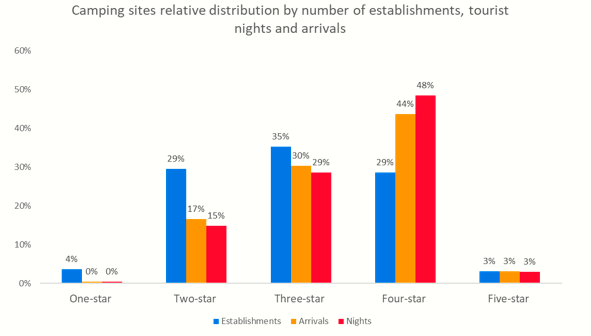
Camping sites accounted for 94% of arrivals and 95% of tourist nights in the total camping accommodation category. We can observe that camping sites with 2, 3, and 4 stars dominate this sector from the table above. Interestingly, four-star campsites account for 29% of all campsites but 44% and 48% of tourist arrivals and nights, respectively. This can be interpreted in a way that camping tourists are looking for higher quality services and are willing to pay for them.
The occupancy rate of permanent beds, measured monthly, shows us that Camping has a similar occupancy rate as objects in households but with a greater seasonality effect. Seasonal character is more or less expected since camping involves spending a lot of time in the open. Hence, it is very dependent on weather factors and the outside temperature. The occupancy rate of permanent beds should be taken with a grain of salt since the methodology of counting permanent beds is very specific in the case of camping when compared to other categories.

Camping tourists are predominantly foreign tourists, with foreign tourists accounting for around 97% of both tourist arrivals and nights. This is also considerably higher than other categories: Hotels (85%, 89%) and objects in households (92%, 93%). In the table below, we can observe which countries accounted for the biggest share of tourist arrivals and nights in camping.
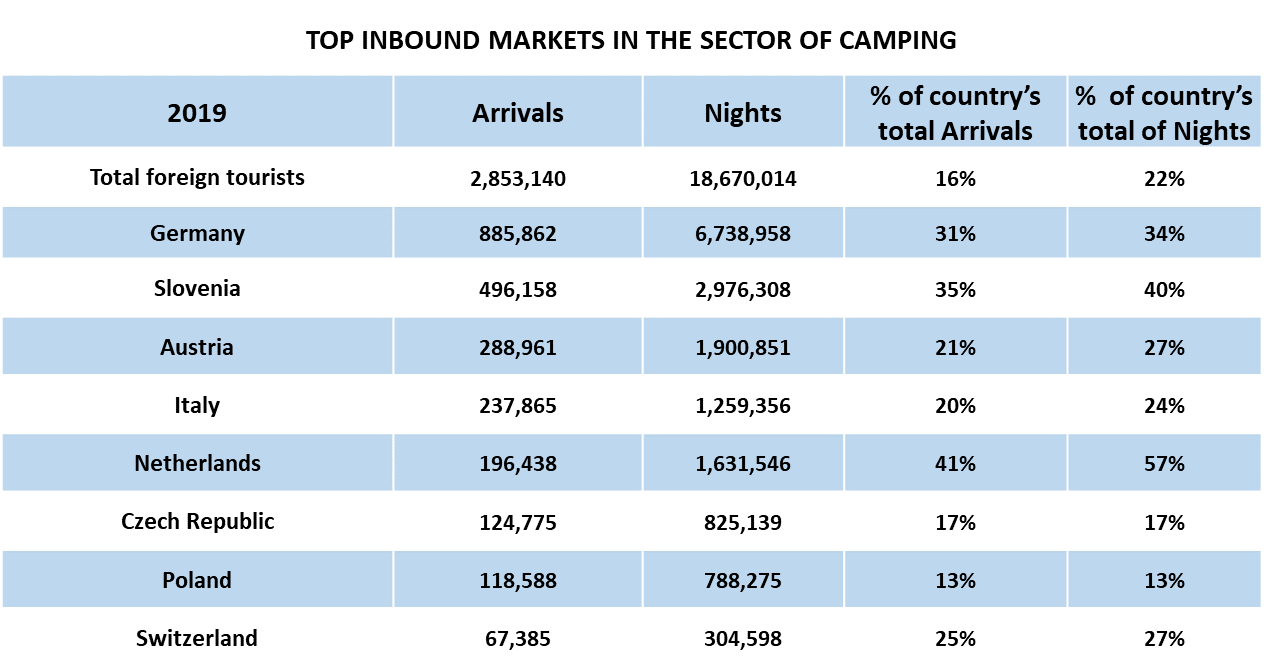
Germany, Slovenia, Austria, and Italy cumulatively account for approximately 70% of all tourist nights and arrivals in camping accommodation units. Interestingly, one-third of all German and Slovenian tourists spend their holiday in Croatian camps. Dutch tourists account for the highest percentage, with 40% of arrivals and more than half of tourist nights are spent in camps.
Types of resorts and regional distribution
According to DZS, resorts can be divided into four categories: Zagreb, Thermal, Seaside, Highland and mountain, and Other resorts. In 2019, Seaside resorts accounted for 95% of arrivals and 98% of tourist nights. We see a distinctive concentration of camps in the northern part of the Adriatic region when looking at counties. Istria and Primorsko-Gorski Kotar county has the highest concentration of camps, cumulatively accounting for 68% of all camping capacity.

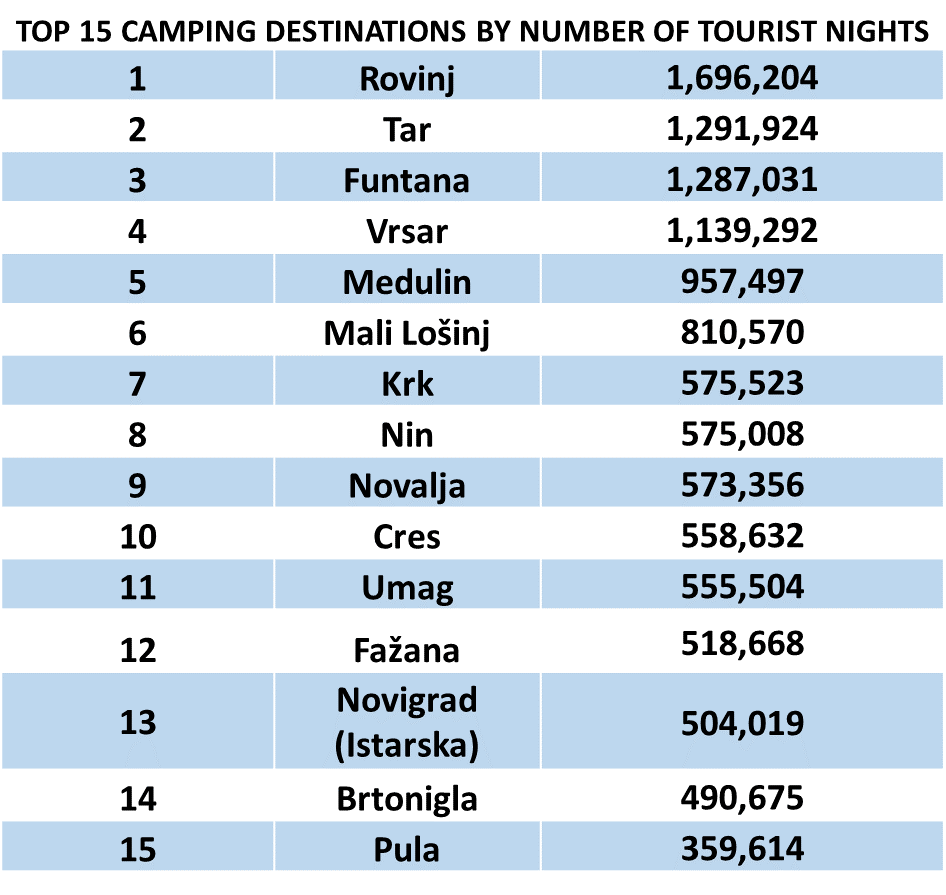 The list of top 15 destinations by the number of tourist nights confirms the extremely high concentration of camping establishments in the northern Adriatic regions.
The list of top 15 destinations by the number of tourist nights confirms the extremely high concentration of camping establishments in the northern Adriatic regions.
TOMAS – research
From the TOMAS research of attitudes and consumption of tourists in Croatia, which was conducted from 2017 – 2020, we can derive powerful insight into the characteristics of camper tourists. Campers and caravans are the third biggest mode of transportation with 11.4%, lagging behind cars 60% and airplanes 20%. Compared to other types of accommodation, Camper tourists are to a larger extent motivated by natural beauties and sport & recreation. Additionally, they are characterized as more loyal guests, with several repeated visits being substantially larger on average compared to other types of accommodation. Campers spend more time than an average tourist swimming and playing water sports but are less interested in sightseeing and gastronomy. The average daily spend of a camper tourist is on average lower than other tourists, both in 2017 and in 2019/2020. In this period, camping tourists have experienced the slightly largest increase of all observed tourists by accommodation type.

From 2009 to 2019, the number of camping facilities grew by 49% and permanent beds by 28%. For comparison, the number of hotel facilities increased 87%, and their permanent beds grew by 68%. At the same time, the number of facilities and number of permanent beds in the category of objects in households increased by an astonishing 1134% and 2019%, respectively. We can see that objects in households dominate, which is expected considering the rising trend of private accommodation and lower capital investments characteristic of this accommodation category.
Camping has a long tradition in Croatia, and its development will undoubtedly continue in the future. However, camping is the most underrated category out of the three most essential accommodation categories. It could be argued that the underdevelopment of camping infrastructure in some parts of Croatia is why Croatia has not yet realised camping's full potential. The Northern Adriatic region is leading the development in this accommodation category. Time will tell whether or not the southern parts of the Adriatic region and continental Croatia will join in.
Data mentioned in this article is derived from the statistical reports, databases, and other resources from HTZ and DZS.
Additionally, some information has been used from the paper Kamping u Republici Hrvatskoj, Gordić Vedrana.
For more on travel in Croatia, follow TCN's dedicated page.
Adriano Palman: Croatian Campsites Gain Impressive Tourism Results
January the 10th, 2022 - Croatian campsites have risen sharply in terms of their popularity ever since the coronavirus pandemic struck, with many preferring to be outdoors rather than stuck in hotels and complexes. They have achieved some truly impressive tourism results which were above all expectations.
As Novac/Jutarnji list/Barbara Ban writes, Croatian campsites, along with holiday homes, has proven to be the most sought after form of accommodation back during 2021's and previous pandemic-dominated tourist seasons. Croatian campsites performed excellently all summer long, but also after the height of the season passed. If the pre-season had been epidemiologically more stable, the results would have been even better.
The world of Croatian campsites cannot be dissatisfied with what they've managed to acheive, especially if numerous awards are added, both from Croatia and from abroad,. All of this was revealed by Adriano Palman from the Croatian Camping Association, which recently held its annual congress at the popular Terme Tuhelj.
How did Croatian campsites take advantage of another pandemic season in 2021?
In 2021, the Croatian camping sector realised as many as 91 percent of overnight stays when compared to the very good pre-pandemic year of 2019, and compared to 2020, we achieved exactly twice as many overnight stays. Realistically, we have to admit that it was expected that Croatian campsites would be one of the first forms of accommodation to be used when it comes to tourism recovery, but these results are above all of our expectations. The fact that there were a record number of German tourists in our campsites in 2021 speaks volumes about their quality, because never before have we had more German guests in the history of camping in this country.
Of course, there are several reasons for explaining such results, but, in particular, probably the first and main reason is that - as predicted at the beginning of the year - there is a great desire to travel and return to normal, and our warm sea and quality camping content which allows for a top quality holiday are certainly one of the first choices of guests, providing a holiday in the greenery with an increased sense of safety and isolation.
However, it should be honestly acknowledged that we aren't following some sort of exclusive trend and that the fact is that camping has become increasingly popular throughout Europe and there's been a real boom, as evidenced by record numbers in sales of camping equipment (campers, caravans, tents) in all major camping countries such as Germany, the Netherlands, Italy, Austria, neighbouring Slovenia, and even here in Croatia.
According to the German ADAC, which is still a ''guru'' when it comes to camping across Europe, Croatia is still second in the average quality of camping in Europe and third in the number of the best campsites that ADAC classifies under the ADAC Superplatz label. Thus, in 2022, Croatia will have as many as 21 Superplates, while two countries that have ten times larger capacities in camping have only a few more - France has 29, and Italy has 33.
What's the situation on Croatia's competitive markets?
One of the things that foreign experts pointed out to us at the recently concluded Croatian Camping Congress is that Croatian results were achieved at higher prices and without giving discounts that have often been applied by some of our competitors over these crisis years. So, when it comes to prices, it's important to emphasise that in 2021, we were second in Europe in terms of camping prices, right after Italy, which is 9 percent more expensive than we are, but we're significantly more expensive than Spain, which is 8 percent cheaper than us. In addition, France even reduced their prices by 5 percent in 2021. We know that in the conditions of intensifying competition, price positioning is an important factor and that is why we're even more convinced that our path is correct and that the very high average quality of Croatian campsites and what they offer provides a good basis and justifies our prices, which our guests have confirmed. This will hopefully continue to be the case as long as we have the right price-quality ratio.
What about the issue of the unresolved ownership issues of tourist land, which has often been a major barrier to investment...
Much like the entire tourism sector, Croatian campsites do have certain problems that hinder further development of competitiveness, and what is high up on that list is unresolved issues of tourist land. It wouldn't be correct to say that this has completely stopped investments. After all, quality indicators also refute this, but it's quite correct to say that this has conditioned the planning and implementation of investments in camping to an extent, while ideas and plans and already reserved funds were much higher. Therefore, we're pleased that in the coming months we definitely expect the adoption of the appropriate regulations that will properly regulate this issue and define the prices, which creates the proper preconditions for regulation and safety, which will certainly encourage an even greater investment wave and launch Croatian campsites and the whole sector very close to the first position in terms of quality in Europe.
In addition to that, another key issue that has plagued us for more than a decade now is the long and repeatedly announced adoption of the new Maritime Property Act, which is a very important topic for camping and a condition for maintaining competitiveness. Here, too, we can announce that cooperation has been established and that work on the new version of the Law is finally expected to begin at the beginning of next year, which will hopefully satisfy the interests of the public and provide Croatian campsites with the necessary competitiveness.
Further issues are also important, from labour shortages onwards, however, these are issues of general concern for tourism as a whole and are already being discussed on various sides.
What kind of camps does Croatia lack today, when looking at global trends?
In Europe, camps have been designed differently from the very beginning than in America or Australia. Sustainability and green business must play a key role in the development of camping here, and a concrete product in several typologies is built on them. The first and most commercially important is the sector of large camping resorts, which offer the widest range of services and very high quality, and the concept represents real hotels out in the open air.
Other routes are small, often family camps, camping resorts and similar sorts of facilities, which are located in attractive positions with natural beauty, urban and rural centres, intersections and traffic routes, islands and the like, and which provide a different kind of guest experience and emphasise intimacy, personal contact with the owners, socialising with other guests and joint activities. Such facilities are often simpler, and are especially important for the tourist development of continental Croatia and for the extension of the season, ie year-round work, which is still in its infancy in Croatia today, but for which there is truly exceptional potential.
Today's most modern and highly sought after trend, is glamping. Glamping mainly exists as part of the offer of the ''main'' camp, but there are more and more examples throughout Europe, including here in Croatia, that such an offer stands out from the rest and moves towards the independent development of specialised, exclusively glamping facilities.
Did we manage to raise what we have offer for the winter?
Year-round work is a relatively new trend in Croatian tourism in general, and it becomes even stranger when it is connected with the context of camps and the weather conditions of holidays which depend entirely on weather conditions. However, we still have prejudices against the outdated sun and sea system, while many European countries with poorer climatic conditions and no warm sea, such as Denmark, Germany, the Netherlands or Austria, have one of the strongest year-round camping scenes in all of Europe.
Today ,you can stay all year round in as many as 33 Croatian campsites from Istria, to Zagreb, all the way down to Dubrovnik and all the way to the East in Slavonia.
For more, check out our dedicated travel section.
German Tourists Love Croatian Campsites, Only One Thing Missing...
December the 15th, 2021 - Faithful German tourists who were among the first to pack their famous motorhomes and hit the road to Croatia following the lifting of lockdown measures have praised Croatian campsites. There is, however, still one thing missing in their view...
As Poslovni Dnevnik/Marija Crnjak writes, although Croatian campsites have an offer that, in terms of all categories of quality and content, significantly differs from the European average, the unimpressive vaccination rate across the country and high mortality throughout the COVID-19 pandemic here in Croatia could cost this sector and the entire tourism industry next season, especially when it comes to the German market, as shown by an analysis from the popular German car club ADAC.
This is important now because reservations for next summer are already coming in for Croatian campsites, and an additional problem for Croatian campsites is that currently only 46 percent of them can be booked. ''Others need to wake up and make an effort to become more visible online,'' warned Uwe Frers, the CEO of Pincamp, ADAC’s booking portal for campsites.
His portal is otherwise the most important campsite search engine in the entire German market with six million unique users in Germany, whose importance is all the greater given that camping is generally not advertised or sold on major online platforms such as Booking.com.
“Pincamp's analysis showed that an automatic and flexible cancellation policy (42 percent) and applications with an alarm about the current conditions under which travel can be key to raising confidence in travel over the next twelve months. If you don't announce your cancellation policy now, you could lose guests who would like to come to Croatian campsites. Don't wait for others to announce theirs before you do, because an interested guest would rather seize the first opportunity,'' said Frers from the Congress of Croatian Camping, which took place in Tuhelj at the end of last week.
Pincamp has nothing but pure praise for Croatian campsites, even in the last turbulent year the availability of online booking has increased from 24 percent to 46 percent, and it is important for guests to book a pitch in advance. For comparison, in Austria, a place can be reserved for the next season in 88 percent of camps, and in 63 percent of camps in Slovenia. In this respect, Croatia is on a par with Italy, Germany and the Netherlands, although these are significantly larger markets.
''For even better sales next season, it is important for Croatian campsites to simplify their prices as much as possible, to calculate all of the additional costs. In terms of quality and content, Croatian campsites can hardly be much better than they are now,'' praised Frers.
This ADAC analysis show edthat Croatian campsites have on average 11 percent better quality in terms of their pitches than average European campsites, meaning that Croatia is 37 percent better than the average in terms of bathing facilities (sea, swimming pools, aquaparks), and 20 percent better in terms of entertainment and similar content.
As many as 43 percent of average Croatian campsites have better ADAC ratings for shopping and restaurant facilities, but safety security could prove to be a problem, although the campsites themselves are not to blame.
"Safety is very important for the Germans in choosing a destination for next year, and they're closely following the news and statistics, coronavirus incidence is very important to them, as is the vaccination rate. This is where Croatia comes off quite badly when compared to competitors across the Mediterranean, such as Italy, France, Spain... and you must be aware that this is the signal you're sending out to your potential guests. Please send out a good message to German tourists,'' warned Uwe Frers in conclusion.
For more, check out our dedicated travel section.
Three Croatian Campsites Rank Among Top Ten in Europe
ZAGREB, 14 Dec 2021 - The German ADAC automobile club included three Croatian campsites in the list of top ten European campsites -- the Aminess Maravea Camping Resort from Novigrad, Camping Omišalj on Krk, and the Zaton Holiday Resort near Nin/Zadar, the Croatian Tourist Board (HTZ) said on Monday.
ADAC released its new list dedicated to camping on its website. Croatia's Aminess Maravea and Omišalj ranked third and fourth, while Zaton Holiday was sixth.
Croatia was second in terms of campsites' popularity with 26 campgrounds in the ranking, behind Germany with 53 and ahead of Italy with 18 campsites.
ADAC is our most important strategic partner and cooperating with them is of the highest priority to Croatia's long-term favorable and secure position on the German market. The basis for future cooperation is also the Memorandum of Understanding, signed at this year's Croatian Tourism Days, making all ADAC sales and marketing channels available to all tourism entities in Croatia, said the head of HTZ's Munich office, Nera Miličić.
She also said that in more than 150 ADAC branches in Germany, sales agents would soon receive training on Croatia's diverse offer in order to be better prepared for booking trips on the German market.
The HTZ also carried the statement of ADAC president and director of the tourism department, Karlheinz Jungbeck, who underscored that Croatia was one of the favorite foreign destinations of Germans and that Germany was the most important market for Croatian tourism.
He said cooperation with Croatia was very good and announced they would also prepare joint activities for the 2022 f.re.e. fair for travel in Munich, when Croatia would also be a partner country of the event.
For more on travel in Croatia, follow TCN's dedicated page.
Camping is Croatian Tourism Leader, Congress Hears
ZAGREB, 10 Dec 2021 - Camping is the leader of Croatian tourism this year with 90% of the nights generated in the record year 2019 as well as in terms of quality and possibilities, even during a pandemic, and market announcements indicate the results will be even better in 2022, a camping congress heard on Thursday.
The 15th congress of the Croatian Camping Union in Tuhelj brought together over a 100 professionals and campsite representatives from across Croatia as well as their guests from the German, Dutch, and Italian auto clubs.
Assistant Tourism Minister Robert Pende said HRK 2.2 billion was earmarked for tourism in the National Recovery and Resilience Plan, with HRK 1.2 billion going to the real private sector, including campsites.
Representatives of the German ADAC auto club and the Dutch ACSI said the "boom" in arrivals of their campers to Croatia would continue next year, adding that Croatian campsites, like those in Italy, are among the best in Europe, some even the best.
ADAC members and others love to camp in Croatia, said Uwe Frers of ADAC, and more and more will arrive because during the pandemic they saw quality firsthand. They were also impressed by the high level of hygiene and other coronavirus rules, he added. "The pressure from Germany on your campsites will certainly be even stronger in 2022."
Ramon van Reine of ACSI said the next camping season in Croatia would be the best to date in terms of Dutch arrivals.
2021 was excellent too, he said, adding that the Dutch love Croatia and that a new group of tourists is joining in and would like to come from April through September.
For more, check out our dedicated business section.
Camp Zagreb, Natural Lakeside Heaven a Short Connection to the City
October 4, 2020 - A visit to Camp Zagreb, a rather delightful lakeside accommodation alternative for Croatia's capital in Sveta Nedelja, a short shuttle ride from the city centre.
Camping on the Adriatic has long been a holiday of choice for hundreds of thousands of tourists each year, and the camping facilities - particularly in Istria - are plentiful and improving year by year. Head inland, however, and camping options are a lot more sparse. But when they are good, they are REALLY good, as I discovered on my first visit to Camp Zagreb, located idyllically on a lake in Sveta Nedelja, just a few miinutes drive from the capital, Zagreb.

I had no idea what to expect from tourism in Sveta Nedelja when the town's local authorities invited my family down for the weekend to have a look around the town, its businesses, local administration, as well as its tourism potential. The home of Rimac Automobili and the most transparent local administration in all Croatia, I was excited to explore the business and Croatia 2.0 local government scene (learn more about those aspects of my trip here), but I was a little dubious about the town's ability to impress touristically. My two teenage daughters were even more dubious about another 'fun' weekend away with Dad and his work... And yet it was they who had huge smiles on their faces on the drive home, having had a VERY good weekend in the Sveta Nedelja Great Outdoors.
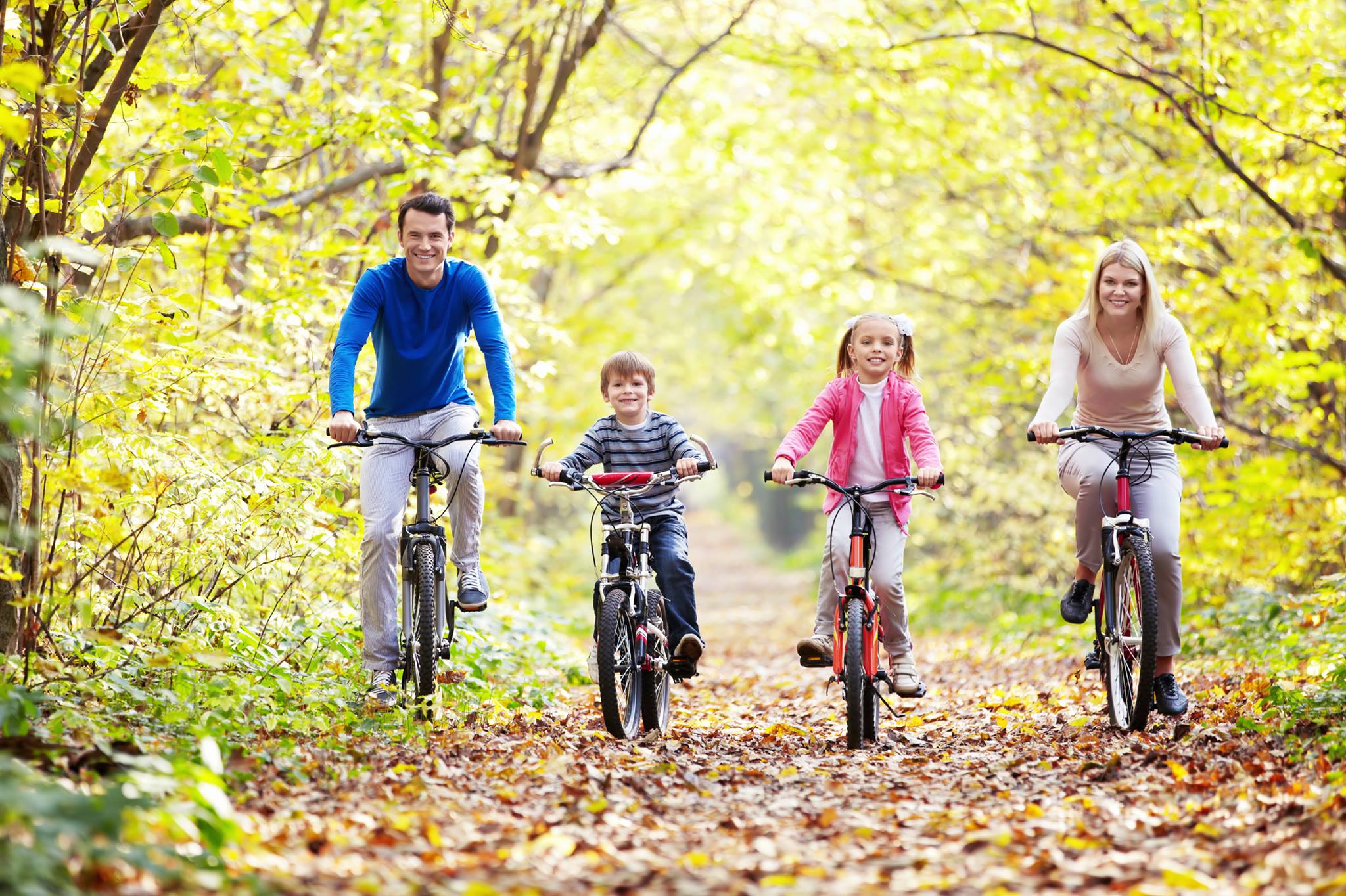
Just 20 minutes from downtown Zagreb, and yet a world away, Sveta Nedelja was a breath of fresh air after yet another week of staring at computer screens running TCN. It has several lakes which comprise one of its key tourist attractions, with Camp Zagreb located on the edge of the largest of them. A perfect base not only to explore the region if you are camping, but - as I saw last Sunday morning - an absolute magnet for Zagreb's residents looking to escape the city and immerse themselves in nature.
And there was plenty to do, with many activities supplied by Camp Zagreb. Cycling around the lakes was a lot of family fun, but also a very natural experience through the autumn leaves. No asphalt roads here, just kid-friendly cycling paths through the trees, affording magnificent views of the lakes.
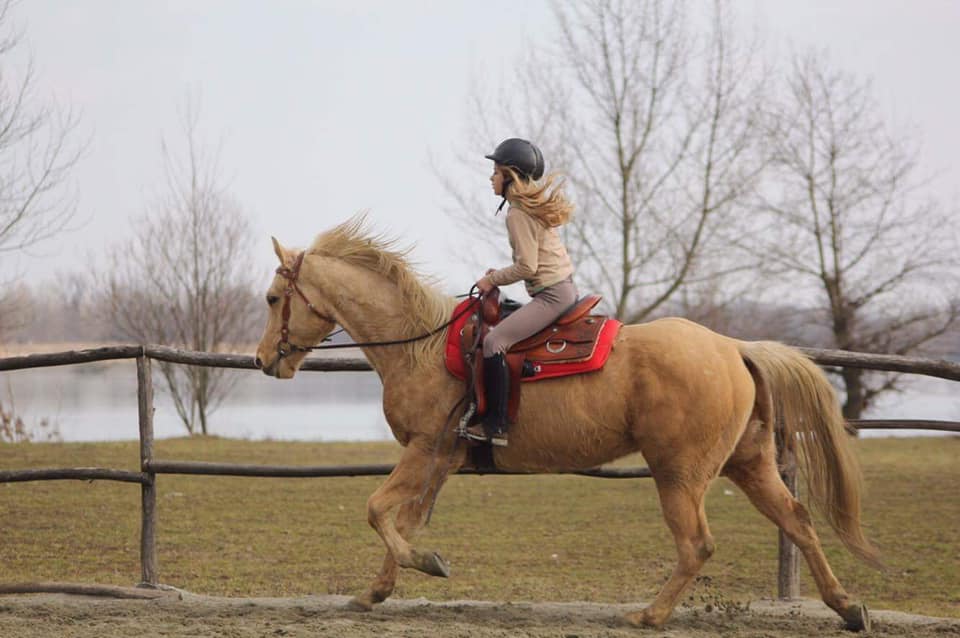
A little horse-riding for the youngsters, perhaps? There is an on-site horse riding school, where horses are available for petting, riding around the arena, a picturesque lakeside tour, or - for the more experienced riders - the chance to gallop along the Sava into the city and back.

Or perhaps go for a little horsey dip instead...
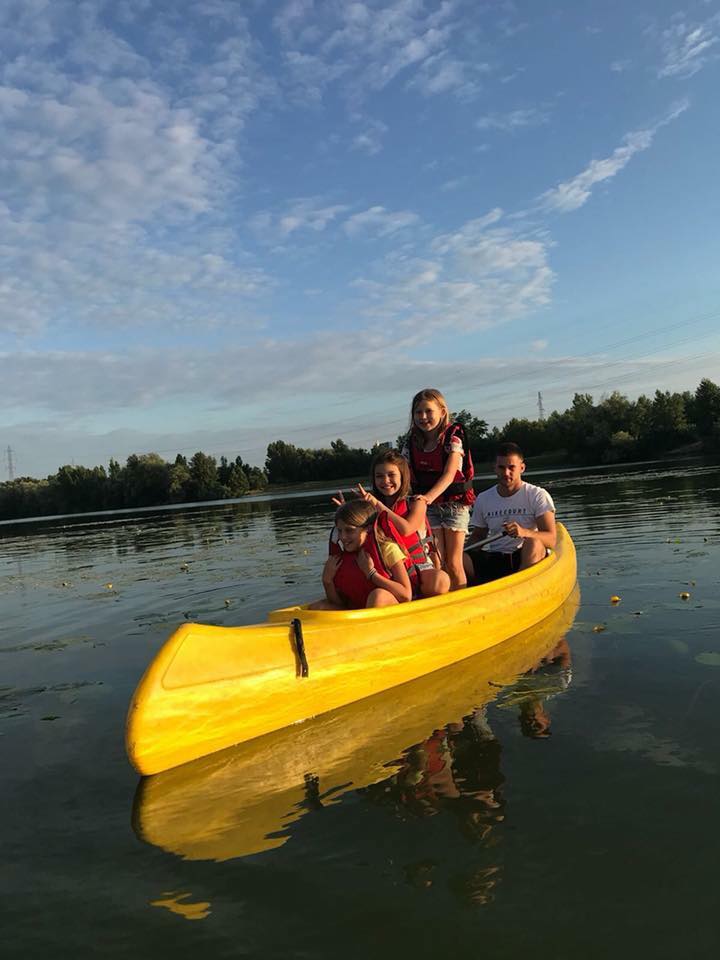
The lakes are also popular for boating, and these can be hired via the camp reception.
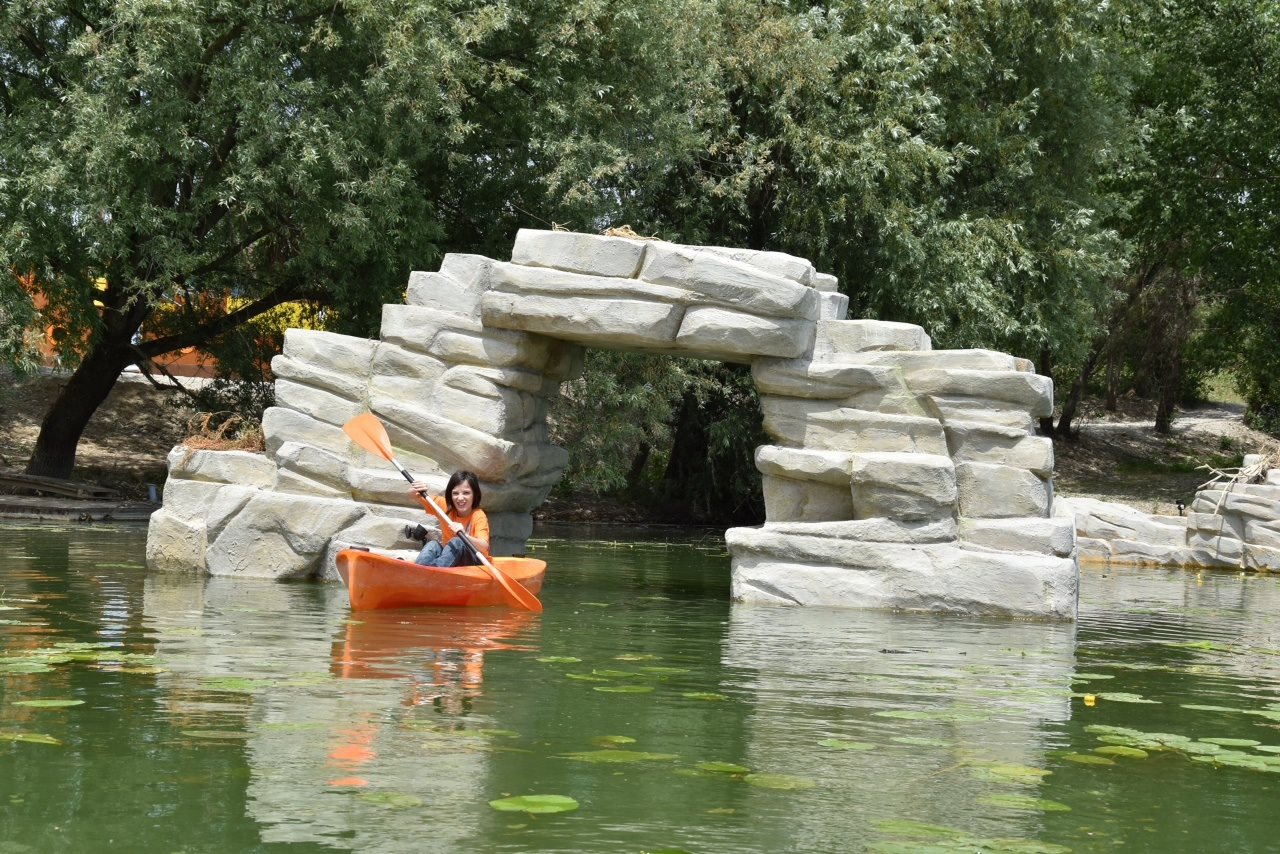
A selection of clever rock formations add to the boating challenge.
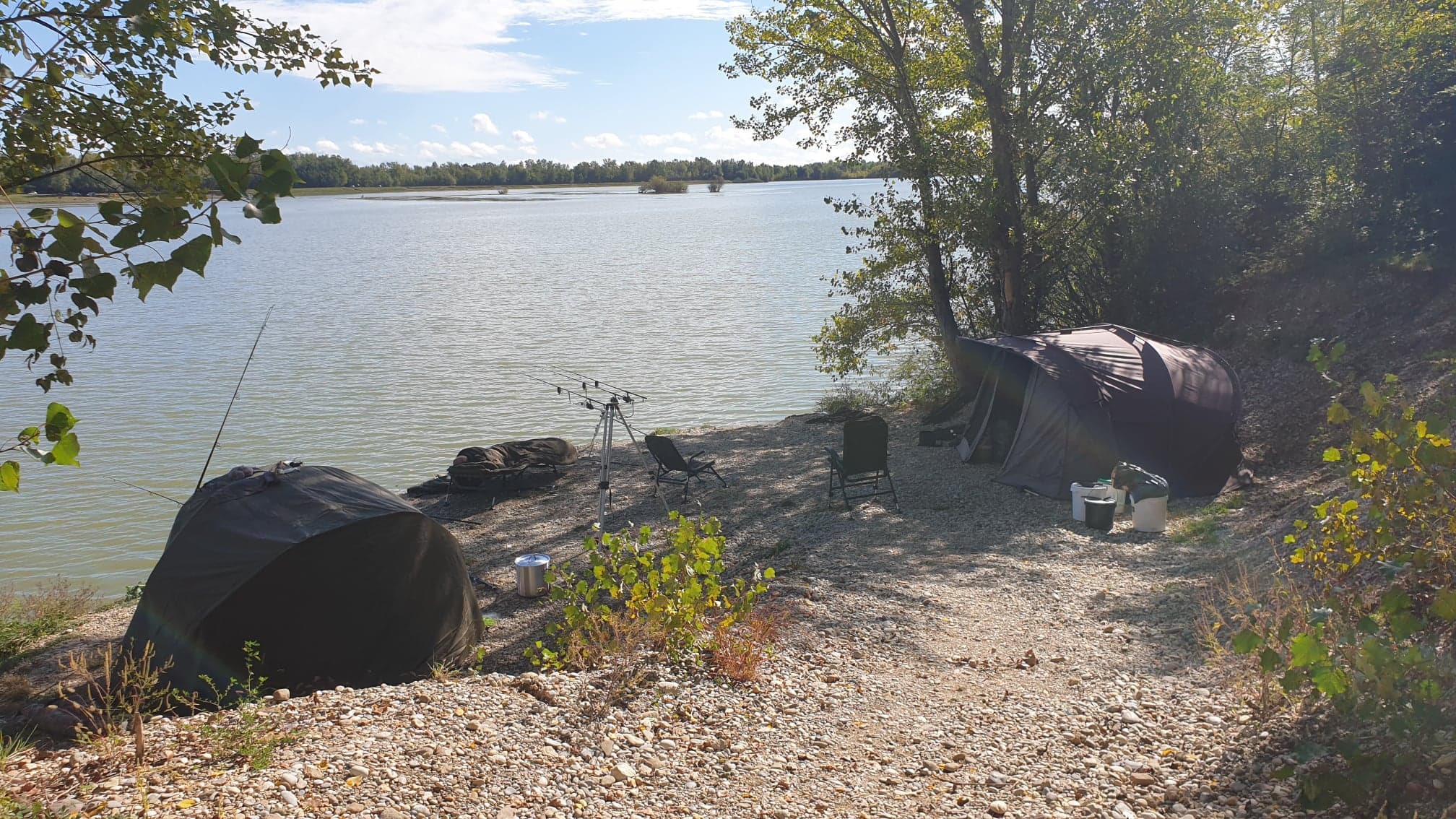
The lakes are also very popular for another popular sporting activity - and a great one in this socially distanced era - fishing. The lakes were full of small little clearings down to the water every 20 metres or so, many of which were occupied by 1-2 fishermen, who had set up their tents for a weekend of relaxation, nature and fishing. With tent pitches starting at 40 kuna a night, a very affordable escape from the stresses of the city.
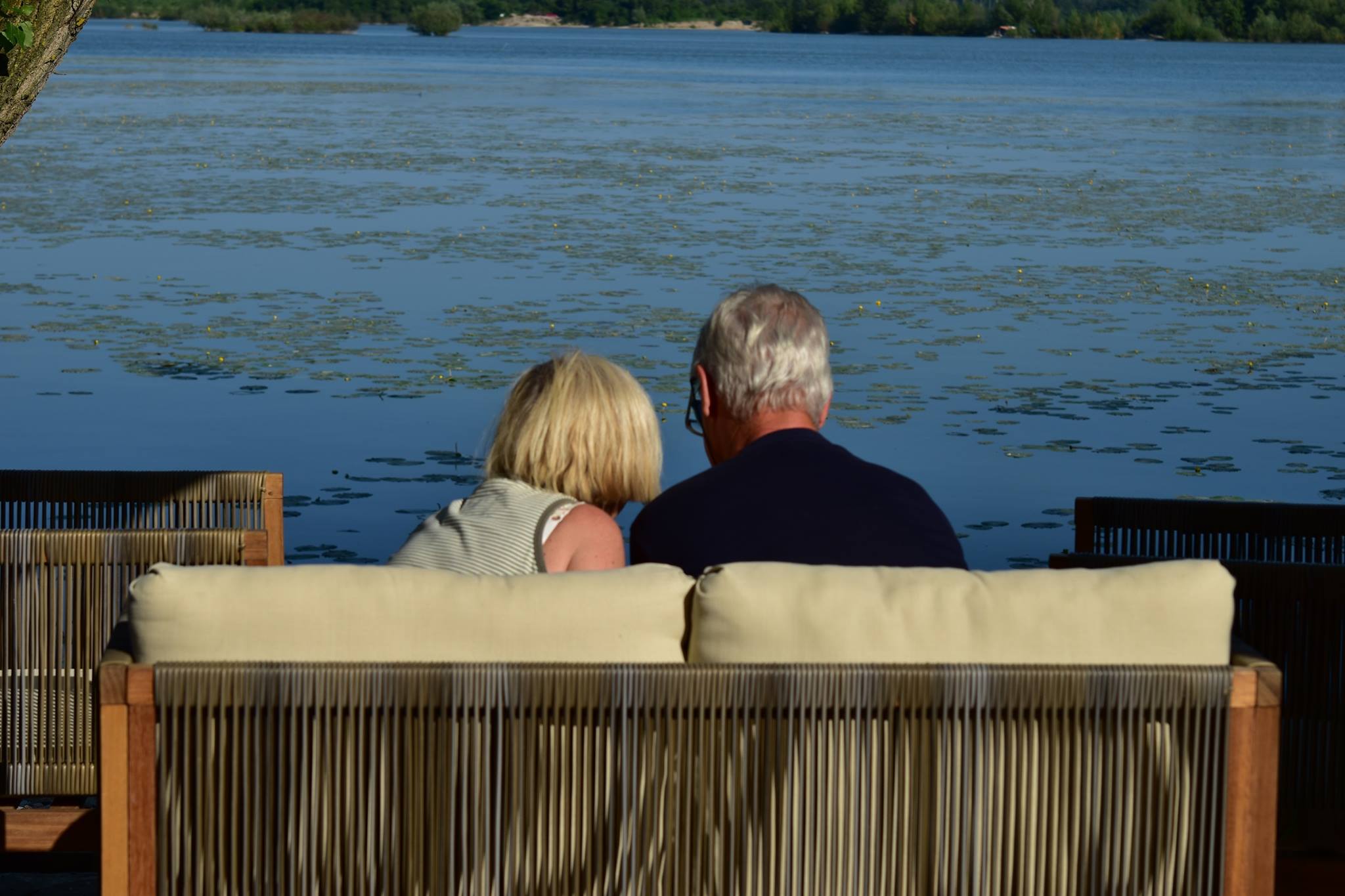
For some, perhaps, even fishing is a little too strenuous an activity. Why not just sit back and relax with a coffee overlooking this magnificent nature a short drive from the city.

And an even bigger incentive for parents to relax with a lakeside coffee, while watching the little ones explore the kids adventure playground next to the cafe and restaurant.
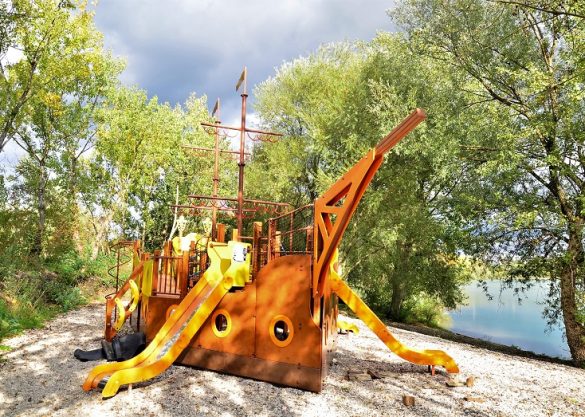
The unique monkey bar ship is just one of the popular attractions.
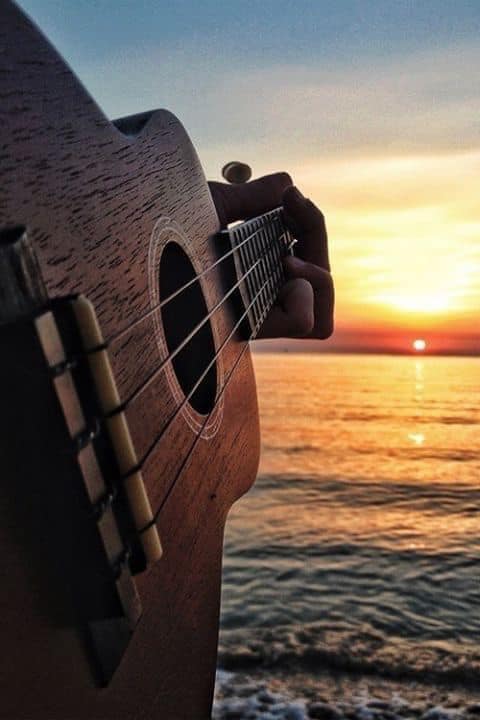
We haven't started talking about the camping aspect yet, but we will shortly, but what struck me during the weekend visit was just how much Camp Zagreb had to offer people from Zagreb for a day or weekend escape. It truly is a tranquil spot, its nature unspoilt and untampered.
Rather than just being there just to serve camp guests, the management appears to be working hard to attract local business as well, and there are plenty of live music events, as well as special events to celebrate the end of the working week.
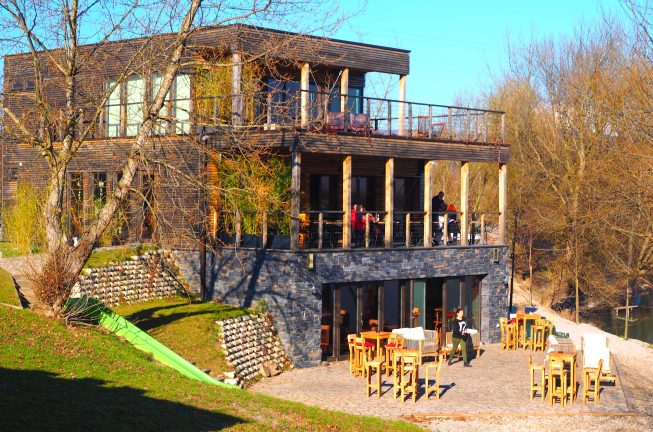
The main building on the water is tastefully done, with cafe/bar on the ground floor, restaurant on the first floor, and a rather special wellness option on top.
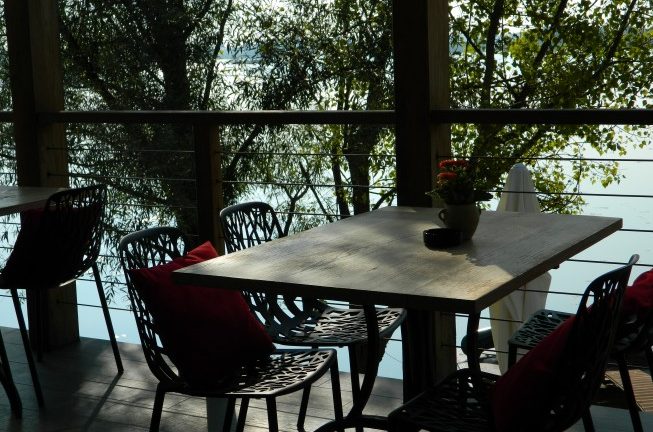
There is plenty of space inside in the wooden interior, but nothing quite beats the view overlooking the water when the weather is clement.
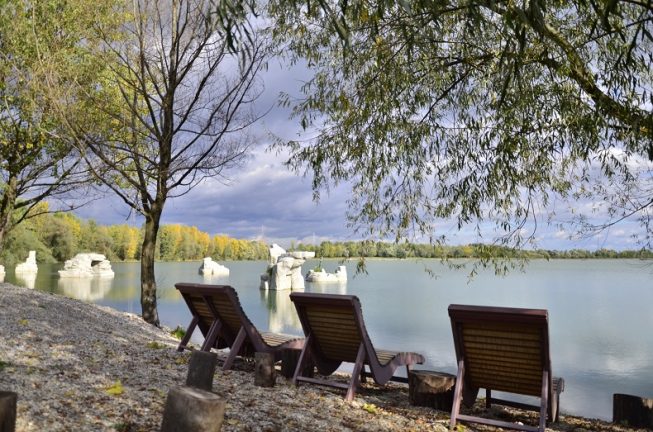
Or a lakeside coffee or something stronger, watching the world go by.
While the attractiveness of a visit to Camp Zagreb and its natural treasures from the city is clear, the core business, of course, is camping. And here too, it proves to be a great destination, but for very different reasons.
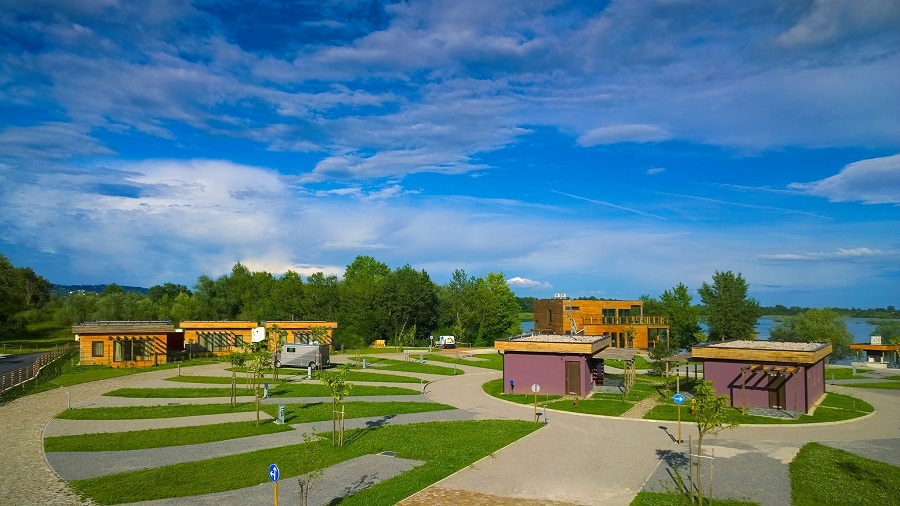
Firstly, location. Sveta Nedelja is just 10 minutes from the main Bregana border with Slovenia, and it lies just off the motorway to the west of Zagreb. For the many campers heading to Croatia from central and western Europe heading down to Dalmatia, it makes for an ideal stop. Psychologically over the border and in Croatia, a few minutes off the motorway so as not to take campers too far from their onward route. And, in addition to the immediate proximity of all the natural goodness described above, it is a great place from where to explore Zagreb in a day. In order to make that experience more comfortable, the campsite offer a shuttle service to the centre of the city, which takes under 30 minutes. There is an additional (free) transfer to the local train station 2 kilometres away, which also connects to the centre of the city.
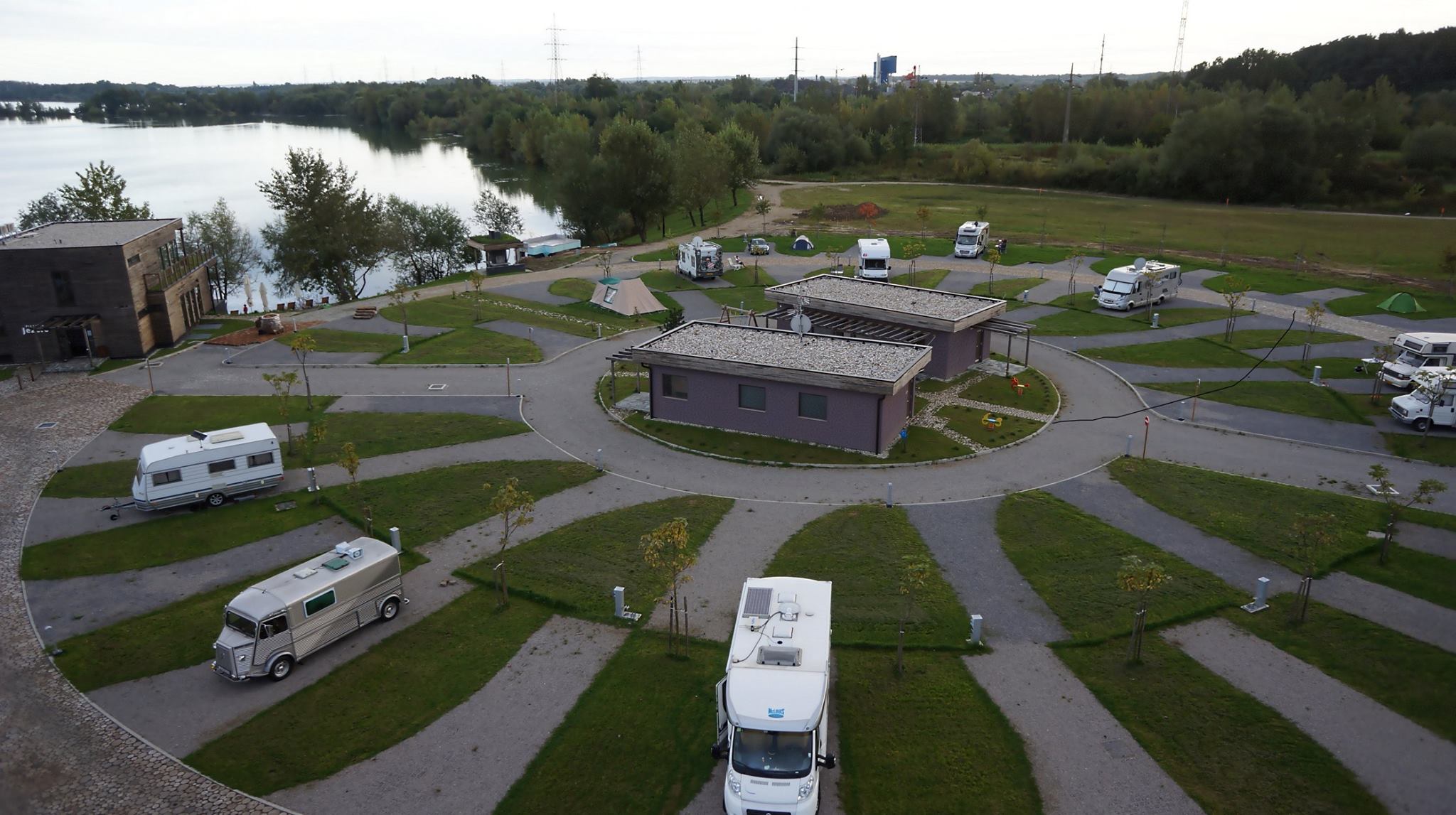
Camp Zagreb has about 20,000 overnight stays in a normal year (2020 has been anything but normal), and it offers various types of camping services, Premier services for caravans and motor homes come in a choice of two pitch sizes - 75m2 and 100m2 - which are located a few metres from the lake, where a quiet zone is observed from 23:00 until 07:00.
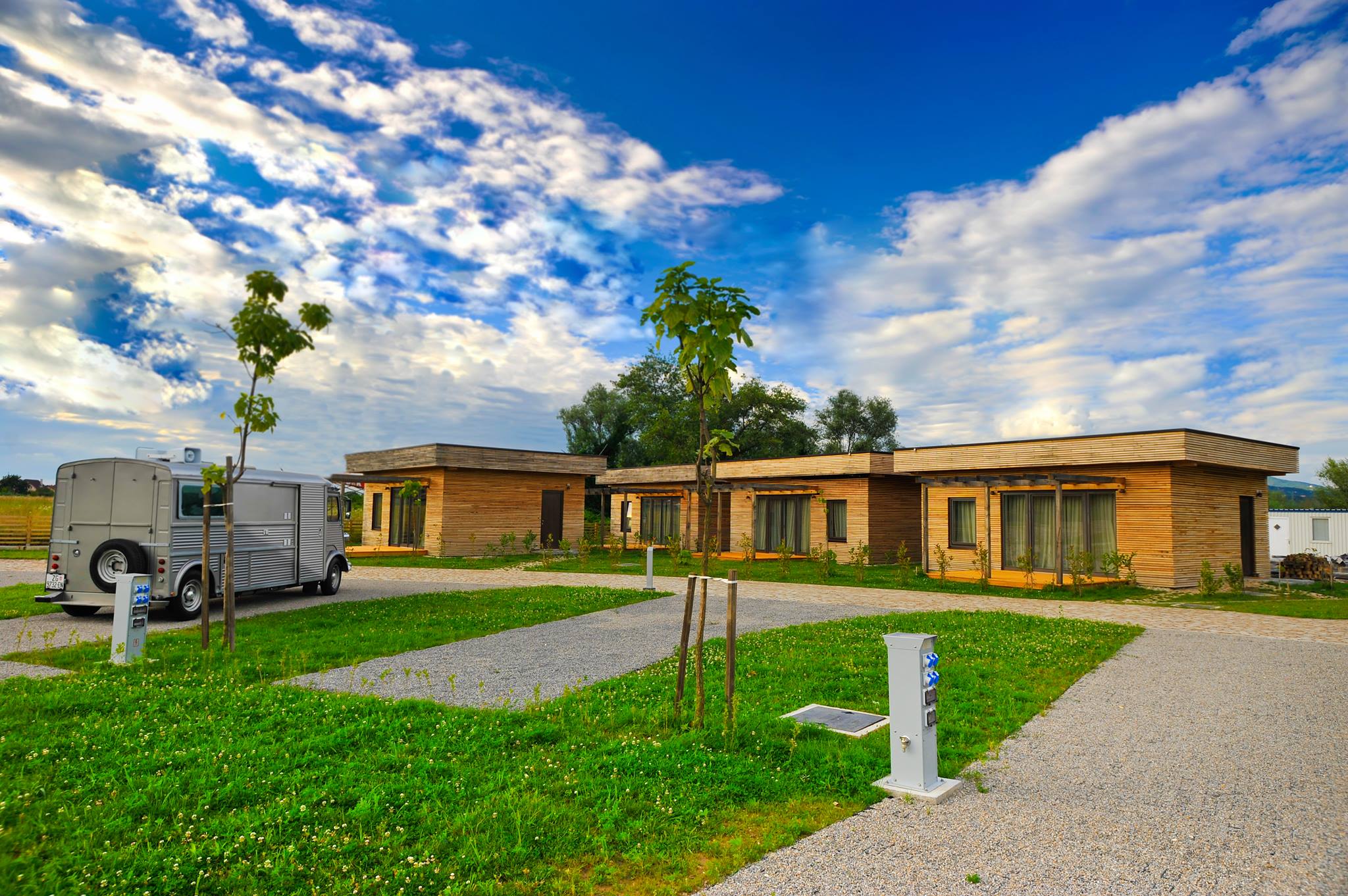
For those without their own motor home, a selection of wooden bungalows, designed for couples, are also avaialble.
Looking for that little extra? The 65m2 wellness suite on top of the restaurant takes campsite luxury to a new level, with Finnish sauna and jacuzzi some of the highlights inside the suite, while the spacious terrace overlooking the lake is the perfect spot to greet the new day.
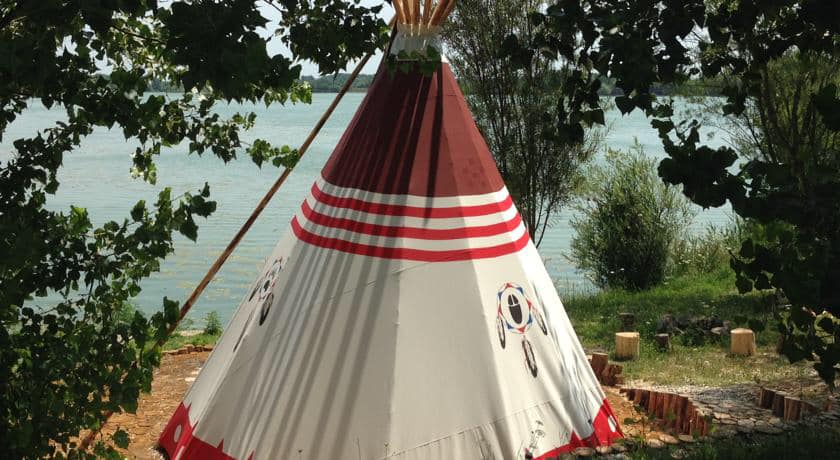
Looking to be closer to the water? A 19m2 tipi tent with its own private area to the water sleeps three, with campsite facilities close by.
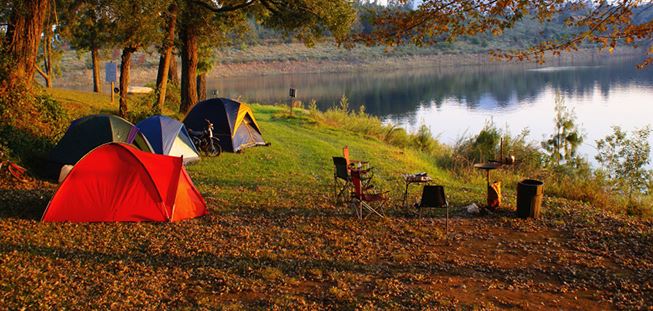
And, of course, there are plenty of lakeside spots away from the crowds for those looking for a weekend of quiet fishing.

I hadn't known what to expect from tourism in Sveta Nedelja when we set off for our business and tourism tour. It was a weekend full of surprises, but the natural beauty of the lakes and surrounding area, completely unspoilt, was as much a highlight as a visit to Rimac.
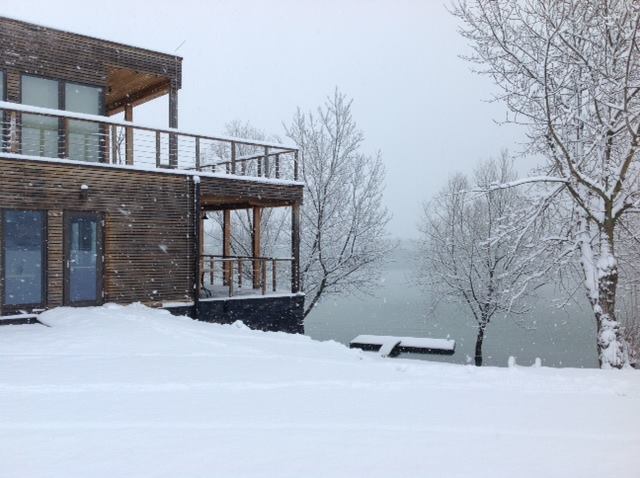
Camp Zagreb is a campsite for all seasons. Open 50 weeks of the year, I can only imagine the winter beauty with a stay in the wellness suite. A delightful year-round escape from the city and stopping off point for onward journeys to the coast.
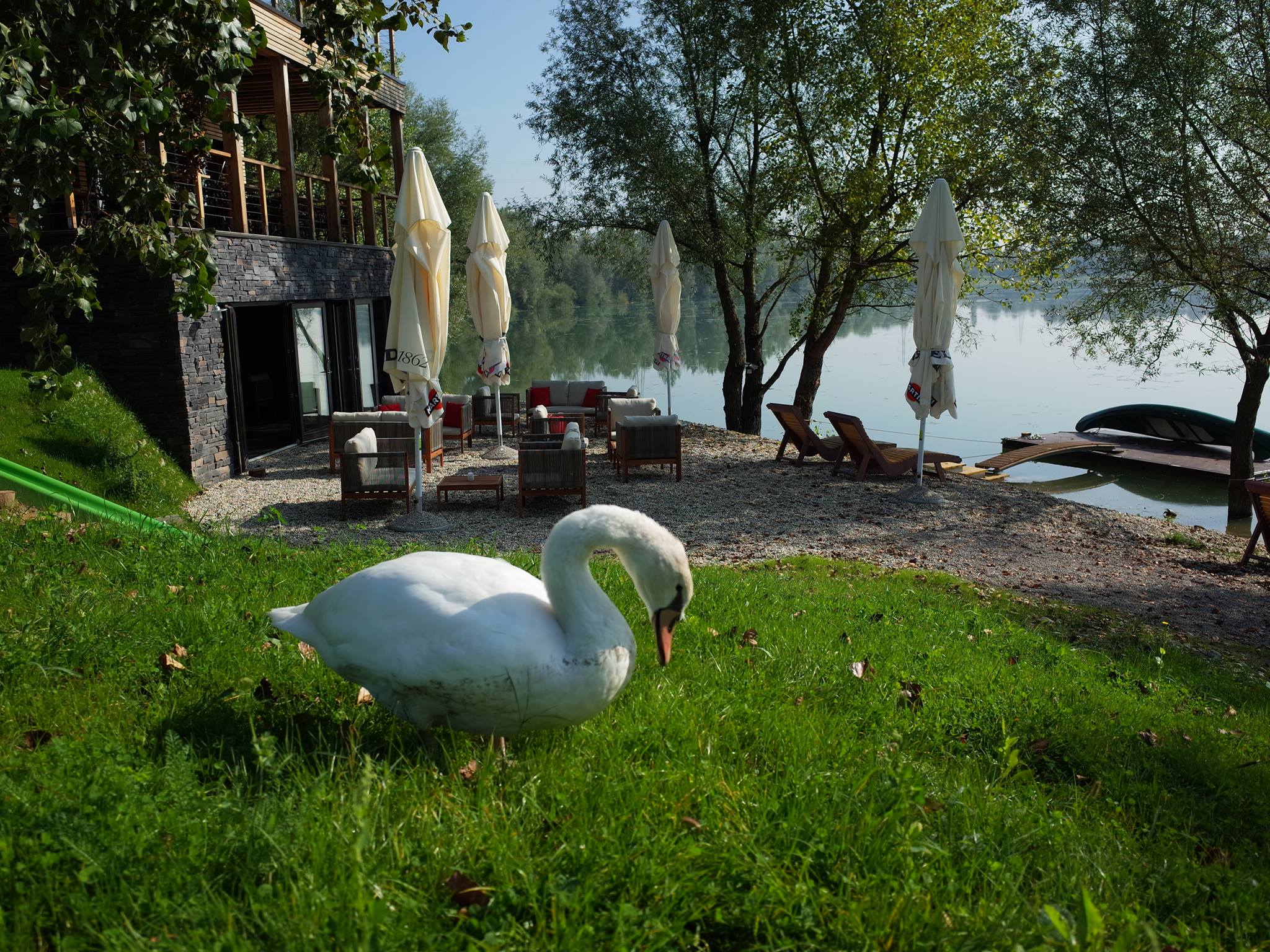
Nature at its finest, whatever the season.
Check out the official promo video below, and learn more about Camp Zagreb on the official website.
For the latest from Sveta Nedelja, follow the dedicated TCN section.
This article is in paid partnership with the Sveta Nedelja Tourist Board.
Arena Hospitality Group's Croatian Camps to Operate in Winter
As Novac/Barbara Ban writes on the 2nd of October, 2020, with the lingering summer weather, Pula's gates remain somewhat empty. Cafes, shops and restaurants have been opened, but the question is for whom. Unfortunately, there are no guests. Various "red zones" did their thing and drove foreign tourists home in late August. Therefore, the off-season in Pula is quite bad, when you ask the biggest Pula-based hotel company - Arena Hospitality Group.
''I don't remember when the weather in Pula was as beautiful as it has been this year. Summer is still going on, but for us the season ended practically when the Austrians put us on their so-called red list. We lost a large number of tourists in one day and I can freely say that that in itself was the end of this season. September was very bad. But we can't influence that. These are mostly political decisions.
Some decisions we couldn't understand. Especially since we were blocked in mid-August. The Dutch made the decision to put us in the orange zone in a single day. People had to leave overnight. But looking at the whole year, we can say that we tried to do the best we could. It's worth knowing that we opened only in June,'' admits the executive director of Arena Hospitality Group Reli Slonim. Different guests also came. Along with the most loyal German guests, there were Czechs and Poles in the facilities of the former Arenaturist.
Their glamping camp in Pomer was the best filled.
''Some talked about lowering prices, but I don't think it mattered. People wanted to feel safe, they wanted to be in quality accommodation, in nature, outdoors. They didn't ask about the prices,'' said Slonim.
Closed hotels
He pointed out that they will have from 30 to a maximum of 40 percent of last year's turnover annually, and without the measures of the state they wouldn't be able to celebrate Easter.
''The state's measures to preserve jobs have helped us tremendously and we're very grateful to them for that. Without them, I don’t know how we'd be welcoming in next year. This year we've employed about 900 seasonal workers, and these are primarily permanent seasonal workers and labour force from the vicinity of Pula. Due to reduced capacity and occupancy, we didn't need more employment, and we even didn't bother to open two of our hotels at all, the Medulin in Medulin and the Holiday in Pula. But that's why the camps were well filled,'' the Arena Hospitality Group boss pointed out.
That's why they decided not to close some at all. For the first time this winter, they will leave the camps Stoja in Pula and Kazela in Medulin open. On top of that, it will be the first time that the Pula and Medulin camps are open in winter.
''We'll come out with this offer soon, which is completely new to us. We're going to start with that because we saw that guests really like being outside, they feel safer. And at the camps they can also get everything they need in the winter. They can come to Istria because of the favourable climate and I believe that pensioners, seniors and people without children will take advantage of it. So, we hope that this action of ours will yield results.
In addition, Camp Stoja is located not far from the large shopping centre in Pula, there are also the city pools, close to the city centre. In addition to these two camps, we'll also have the Histria Hotel open all winter,'' Slonim revealed. As for the next season and how to prepare for it, Slonim has no doubts in his mind.
Pula is better than Berlin
''The least problem for us is the preparation for the next season if the situation is favourable and if they allow us to work. This year we saw how we can function with measures and we're already used to it. The only thing that matters to us is that we can work,'' emphasised the head of the Arena Hospitality Group, which had much better results in Pula than in European cities where it has hotels, such as Berlin or Cologne in Germany.
''City tourism was dead this year and we felt that too. We had some guests in Cologne. We'll see how this segment of tourism will develop further. It's difficult to deal with tourism today when hoteliers can control and manage absolutely nothing,'' concluded Slonim.
For the latest travel info, bookmark our main travel info article, which is updated daily.
Read the Croatian Travel Update in your language - now available in 24 languages
Impressive Two Million Euro Boutique Camp Opened on Brac Island
The ongoing coronavirus pandemic has seen many a business venture and investment grind to an unexpected halt, especially in the tourism sector which has been the hardest hit economic activity in Croatia. However, the virus and its spread hasn't stopped everything, and Brac will get something new this summer regardless of the current climate.
As Jozo Vrdoljak/Novac/Privredni writes on the 2nd of July, 2020, Boutique Camping Bunja was recently opened in Babin Laz Bay near Supetar on the beautiful island of Brac in Central Dalmatia. Supetar will thus, adapting to the current trends of solitary holidays, have a small four-star boutique camp in its arsenal this season.
The camp has fourteen modern mobile homes and 32 spacious pitches for campers and tents, of which the largest, most luxurious ones, cover from 70 to 130 square metres. In addition to the beach bar, massages on the beach, and a heated freshwater pool, Brac's new facility offers a children's playground, bike and kayak rental and more.
Along with its lush Mediterranean greenery, the camp's walls are built in the traditional Dalmatian drywall style to remain in keeping with the rest of the island.
The investment in the camp on Brac is worth a massive two million euros in total
"Camping is the perfect answer to the growing need of people to return to nature, which is currently the best and safest way to relax, so we have no doubt that Boutique Camping Bunja will get its guests, lovers of our island, even during these challenging times. There is a large selection of high quality private and hotel accommodation, which can be enjoyed by families with children, but also couples who will choose adult only hotels, and there are also attractive rural villas around the place,'' said Ivan Cvitanic, the director of the Tourist Board of Supetar.
Supetar currently has two camps - Bunja and the Waterman Beach Village with a total of 124 campsites and 57 mobile homes, which can accommodate 462 guests. Camping has been experiencing a real tourist boom in recent years, both globally and locally, and is an ideal form of holiday for all those who seek solitude and true coexistence with nature.
For more, follow our travel page.
Valamar Invests 280 Million Kuna in First Large 5 Star Camp
Despite the rather unpromising weather that marked May and the very beginning of June, at the beginning of the month, Valamar's new camp received more than 1,500 guests, most of whom were Germans and Austrians.
As Borivoje Dokler/Poslovni Dnevnik writes on the 19th of June, 2019, at the beginning of the month in Funtana, a Croatian village seven kilometres away from Poreč, the Istra Premium Camping Resort opened its doors to the public.
This is the first large Valamar five-star camp, which stretches across 37 hectares of land and can accommodate as many as 2,781 guests at any one time. Over the past two years, 280 million kuna has been invested into the project, making this, along with the five-star Valamar Collection Marea Suites, the most significant project for Valamar this year. Booking is going excellently and on the day ''camp opening day'', scheduled for the 27th of June, the camp will operating at full capacity.
Most of the guests appear to come from Germany and Austria, although it's still somewhat difficult to grasp the exact structure of guests to this Valamar facility. This camp, with its wide choice of luxury accommodation, can satisfy even the most demanding guests, from those looking for a nice plot facing the Adriatic sea, a modern camping home, to those wanting a luxury camping villa with its own private pool.
As far as prices are concerned, Valamar offers plots ranging from as little as 15 to as much as 119 euros, and when it comes to luxury accommodation, prices range from 58 to 567 euros. For example, for a glamping tent with a fully equipped kitchen, bathroom and two bedrooms during the peak tourist season, it's necessary to allocate around 250 euros per day, while renting out the most expensive Camping Villas which can accommodate up to six people, you're looking at a price tag of above 500 euros.
The camp has a large number of entertainment facilities for children, of which Aquamar is particularly well known, it's a family water park with five pools and water attractions covering a total water surface of 1,030 square metres.
What is particularly refreshing about Valamar's new project is the large indoor entertainment zone with various playrooms, children's clubs and a large theater. The games are equipped with the Super Mario program and are adapted for children under three years of age, and then from three to seven and then seven to twelve years old.
In the centre of the camp is the central Piazza square (trg), which hosts the ''Musi&Fun'' program each and every night, and is surrounded by a number of small specialised shops and bars. Although they offer mostly high-quality products, the prices here don't really differ all that much from those you'd see in regular stores.
Up to now, Valamar has invested an enormous 5.8 billion kuna in Croatian tourism. Within the three-year growth and development strategy, a total of 2.5 billion kuna has been invested into its tourism portfolio, and more than 3 billion kuna has been invested in the expansion of the company's operations and acquisitions.
Make sure to follow our dedicated travel page for much more.




